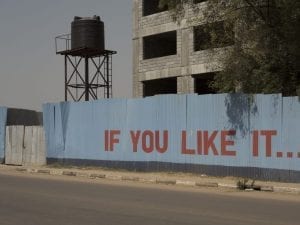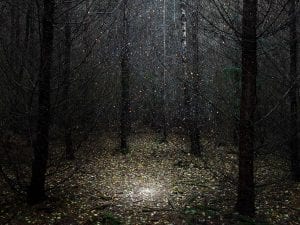What is it about other beings that invites a stare? In a portfolio completed toward the end of her career, Diane Arbus invites us to look, uninhibited from the confines of society, at images she captured of the normality of that would otherwise be dismissed as marginal. In so doing, she creates a space for an intimate dialogue whilst sanctifying the privacy of her subjects. Arbus, like none other, found the bizarre in the everyday and the everyday in the bizarre, bringing the everyday viewer into proximity with eccentrics, or perhaps their own eccentricities.
Back in 1971, photography was, perhaps, taken less seriously as an art form compared to other traditional methods. And yet it was this set of 10, sometimes 11, square-format photographs of some of the most marginalised people in society that changed everything. Arbus became the first photographer featured in Artforum. Poignantly enough, she completed eight sets of prints, only four of which she managed to sell – out of a planned edition of 50 – just months before taking her own life. Posthumously, she first became the first photographer ever featured at the Venice Biennale, in 1972, enjoying far more success than during her lifetime, when she often struggled to find (paid) work.
Looking back, it seems incredulous that it took so long for photography to gain proper recognition as “serious art.” Arbus’s predecessors and contemporaries included the likes of Jacques Henri Lartigue, Weegee, Ansel Adams, Robert Capa, Henri Cartier-Bresson and Robert Frank. Whether or not they were classified as fine art, they forged ahead with their own unique visions. What is it, then, about Arbus’s images of eccentrics that made them so groundbreaking?
Their startling immediacy and flatness, for one. It is almost impossible to take a first glance without being drawn back again to observe the subjects staring you right back, or to observe the minute details that only photography could reveal, like a transvestite’s pockmarks, freshly shaven stubble and glassy eyes, or the game of light and shadows in a nudist couple’s living room and on the folds of their ageing bodies. “They are the proof that something was there and no longer is. Like a stain,” Arbus once wrote. “And the stillness of them is boggling. You can turn away but when you come back they’ll still be there looking at you.”
The photographer developed an experimental printing technique with soft borders whilst working on A box of ten photographs, the images seemingly melting or dissolving into the paper to make them appear that much more real. In her earlier work, when using 35mm film and even as she began using a medium-format camera with 120mm film, the New Yorker crafted prints whose images had crisp edges and wide borders. She then used irregular black borders to frame her images starting around 1965, a style she eventually abandoned when it became more popular.
For the portfolio, the 20-by-16-inch photographs Arbus printed herself featured hand-annotated vellum sheets between each print like a veil, the whole package inserted in a clear acrylic box designed by Marvin Israel to serve as both protective cover and frame or display case. She shot the images from 1962 to 1970. Arbus sold the portfolios for $1,000 a piece, or around $6,200 (£4,370) when adjusting for inflation, a bold price for photography at the time. The editions sold to fellow photographer Richard Avedon and Bea Feitler of Harper’s Bazaar each contained an eleventh print — Masked woman in a wheelchair, P.A. (1970) for the first and A woman with her baby monkey, N.J. (1971) for the second. The result is a carefully staged encounter between viewer, subject and photographer.
Olivia Hampton
Diane Arbus: A Box of Ten Photographs, Smithsonian American Art Museum, Washington, Until 21 January. For more information, click here.
Credits:
1. Diane Arbus, A Family on their lawn one Sunday in Westchester, N.Y., 1968, from A Box of Ten Photographs.





